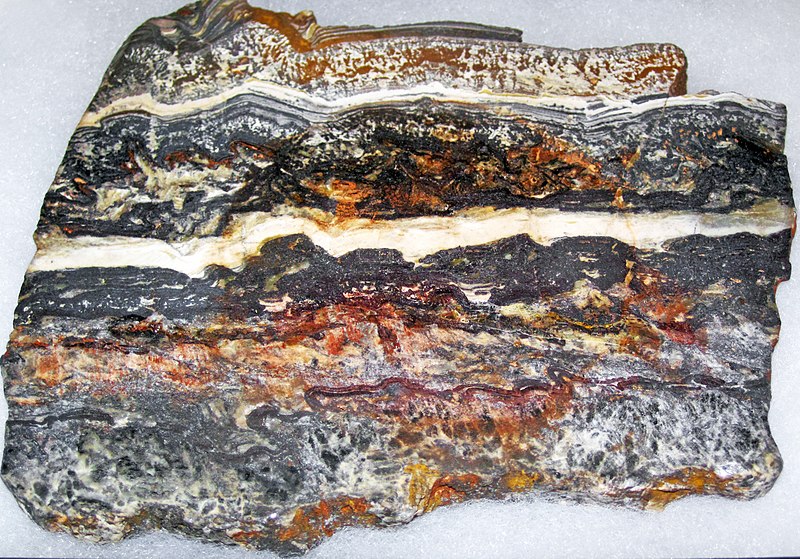Featured Image: Rock fracture from the Dresser Formation, Australia. Fluid inclusions are trapped in the white stripes. Image courtesy Ser Amantio di Nicolao, used with permission.
Paper: Ingredients for microbial life preserved in 3.5 billion-year-old fluid inclusions
Authors: Helge Mißbach, Jan-Peter Duda, Alfons M. van den Kerkhof, Volker Lüders, Andreas Pack, Joachim Reitner, Volker Thiel
Just a few weeks ago NASA made a historic landing of the Perseverance rover on Mars. This rover symbolizes our human drive for exploration and the need to find the origins of life to answer the big question—are we alone in the universe? In addition to extraterrestrial investigation and research, we can address this fundamental question here on our own planet by digging into extreme environments that are analogs for ancient Earth or other planets. These unusual environments, such as hydrothermal vents in our deepest oceans, boiling hot springs in Yellowstone, and prehistoric lakes in South America, can give us glimpses of ancient information and clues about to the ingredients of life. By discovering our own origins of life, we can begin to understand how it may evolve on other planets.
On this quest to define the origins of life, Mißbach and coworkers were the first scientists to look deep within the Dresser Formation in West Australia to find remnants of primeval microbial meals. The Dresser Formation is a key location in that it stands as a monument to primordial Earth. Billions of years ago, this formation was a hydrothermal vent deep at the bottom of the ocean that was once slick with boiling hot liquid rocks. These boiling and roiling rocks and minerals captured fragile organic molecules made of carbon and preserved them, much like a tar pit would fossilize a prehistoric creature. As the liquid rocks and organic carbon slurry traveled down the side of the hydrothermal vent (which could have been as tall as a mountain), it cooled and hardened. The organic carbon trapped in rocks hardened into little bubbles of trapped liquid and gas, called a fluid inclusion. Mißbach and lab mates dug into the present-day Dresser Formation to extract and identify the captured fragile organic carbon structures within the fluid inclusions.
Organic molecules are the starting points of life, as they may have served as the first meals of newly evolved primeval microbes that lived on the side of the hydrothermal vent, lending the microbes the energy necessary for growth and reproduction. To sample and visualize these organic molecules in the fluid inclusions, the researchers employed many complex chemistry techniques. The first technique involved identifying the structure of the fluid inclusions by shooting the individual atoms present in the organic molecules with a high energy laser. The laser caused the atoms to vibrate at different speeds depending on the identity of the atom (for example, carbon versus oxygen) and how they are bound to surrounding atoms. Mißbach and lab mates measured the vibrations of fluid inclusions, allowing them to reconstruct the atomic structure using a computer. To more specifically identify the organic carbon structures, the fluid inclusion samples were bombarded with electrons, which are very negatively charged atomic particles. Electrons break up the organic carbon structures, releasing them into their constituent elements which have a positive or negative charge. A computer can read the elements and their charges and reconstruct the specific composition of the organic carbon structure
By successfully implementing these techniques on the fluid inclusions within the Dresser Formation, Mißbach and coworkers were able to identify biologically-relevant organic molecules that are capable of participating in primeval microbial metabolisms. Their work lends insight into how ancient microbes living on the side of the hydrothermal vent may have developed ways to eat these organic molecules, providing a way for scientists to begin to piece together how ancient microbial life functioned. They were the first group to assess these molecules from such a unique location, revealing intriguing organic compounds that allude to a greater picture of prehistoric microbial day-to-day life, taking us one step closer to unveiling the mysteries of the origin of life.
Prehistoric Microbial Meals Found in the Australian Outback by Jessica Buser-Young is licensed under a Creative Commons Attribution-ShareAlike 4.0 International License.

